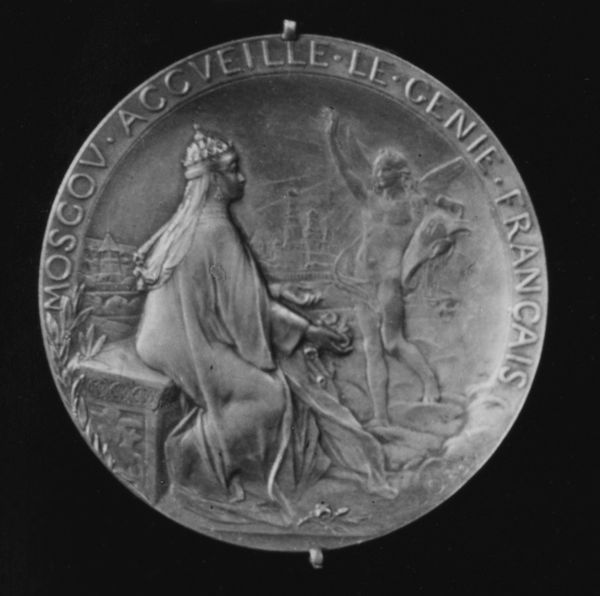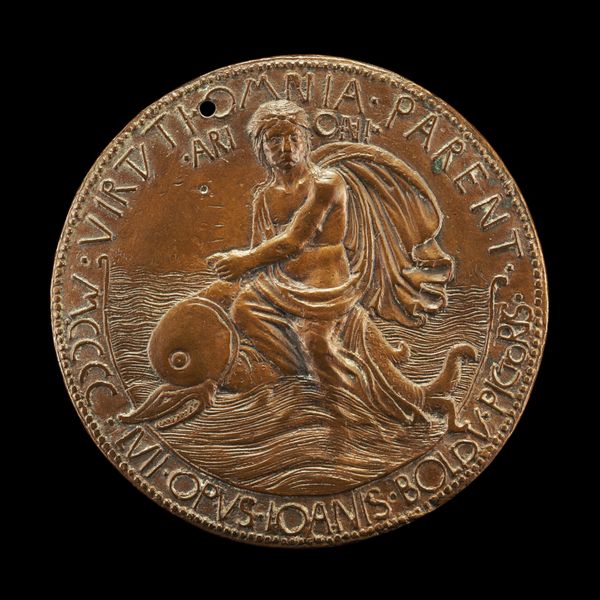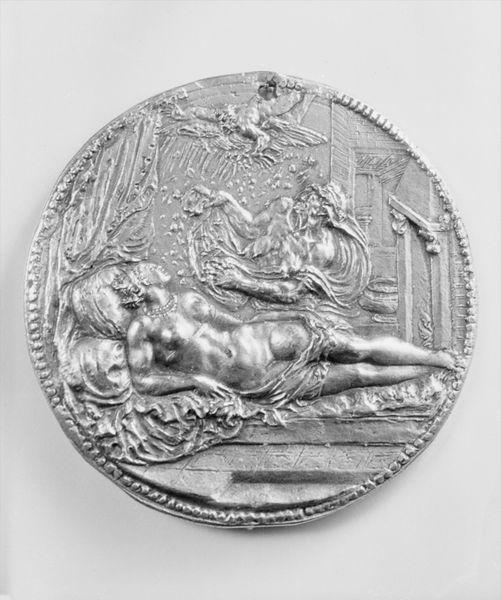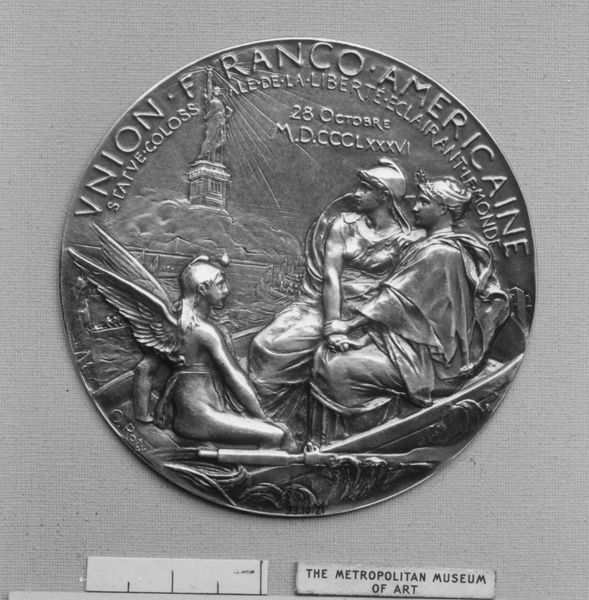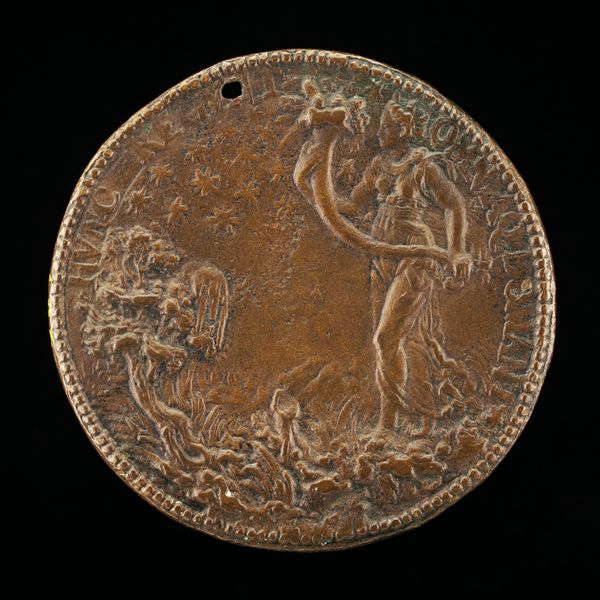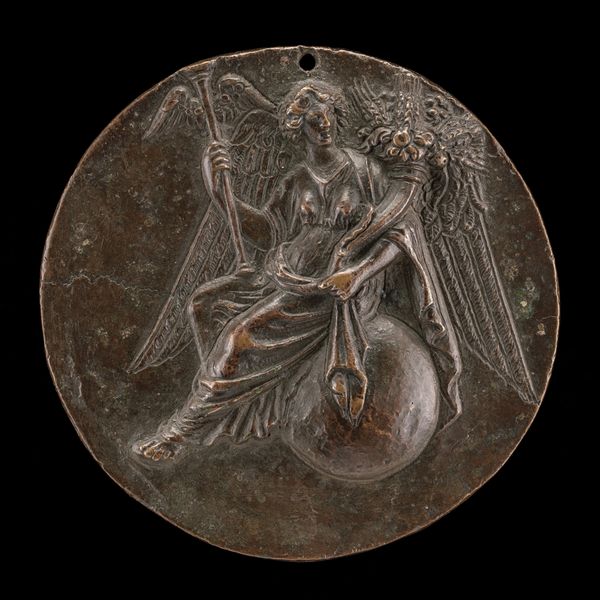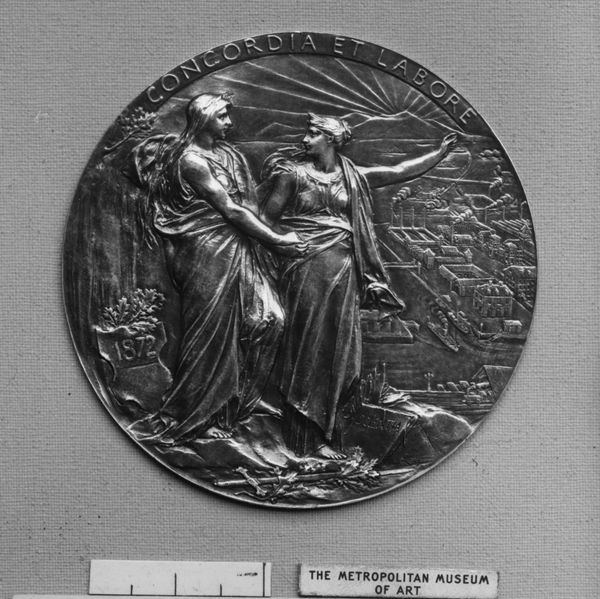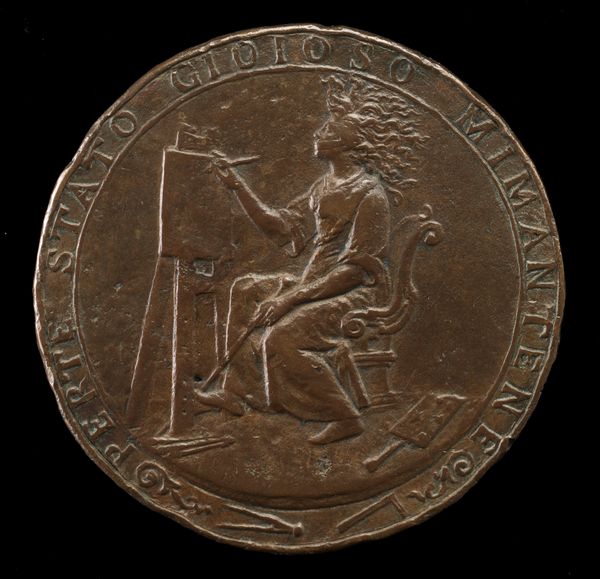
The International Exhibition of Electrical Apparatus, Paris, 1881 1881
0:00
0:00
relief, bronze, sculpture
#
medal
#
sculpture
#
relief
#
bronze
#
figuration
#
female-nude
#
sculpture
#
history-painting
#
decorative-art
#
nude
Dimensions: Diameter: 3 1/8 in. (79 mm)
Copyright: Public Domain
Curator: This bronze relief by Louis-Oscar Roty, crafted in 1881, commemorates The International Exhibition of Electrical Apparatus held in Paris that same year. Editor: The immediate feeling is one of dynamism and almost heroic optimism. The central figure seems to be emerging from or dancing upon the crest of a wave, her form rendered with graceful lines that capture movement so well. Curator: Absolutely, that sense of movement is deliberate. The female nude, draped in flowing fabric, serves as an allegorical representation of electricity itself, newly harnessed and presented to the world. We must also contextualize the implications of a nude woman figure being symbolic of such "power" - at a time when the status of women, especially within science and industry was not acknowledged nor advanced. Editor: And consider how Roty has handled the negative space. The figure emerges from a churning, almost chaotic background, bringing the eye inevitably back to the smoothness and sculpted volume of her form. A certain visual hierarchy takes precedence: texture versus form, chaos versus control. Curator: Note too, how the circular composition reinforces the concept of totality and global reach of electrical innovation. It encapsulates the narrative, quite literally holding it within the frame. The use of a female nude may also symbolize progress and modernization, but we must question whether the choice was indeed one that placed agency to women, or indeed fetishized its impact in correlation with power. Editor: The tension between the sculpted figure and its abstract surroundings definitely brings the question to the fore; The contrast invites contemplation, asking how society embraces novelty—a dance, if you will, between progress and established norms. Curator: Reflecting on this work, it speaks volumes about the evolving narratives and societal shifts interwoven within technological advancement. We would not have electrical inventions had not othered persons and societies suffered. Editor: And for me, its tactile and fluid forms illustrate art's power to both capture the dynamism of an era while revealing new form.
Comments
No comments
Be the first to comment and join the conversation on the ultimate creative platform.
